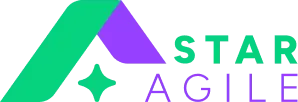What Are The Types of TOGAF Certification Exam Questions?
Understanding the structure and types of questions you'll encounter in the TOGAF certification exam is crucial for effective preparation. The TOGAF certification is divided into two levels - Foundation and Practitioner - each with distinct question formats and difficulty levels. Let's explore the exam format and question types for both levels to help you prepare strategically.
TOGAF Foundation Exam Format:
Multiple-choice questions with four options (A, B, C, D)
Objective questions testing knowledge recall and comprehension
Single correct answer per question
Covers TOGAF framework concepts, ADM phases, and terminology
TOGAF Practitioner Exam Format:
Scenario-based questions with complex business situations
Gradient scoring (0, 1, 2, 3, or 5 points per question)
Multiple sub-questions within each scenario
Focuses on practical application and decision-making
Tests ability to analyze stakeholder concerns, select appropriate techniques, and apply ADM phases
Sample TOGAF Foundation Exam Questions
Here are example questions for beginner-level typical of TOGAF Part 1 practice:
Question 1: Which phase of the ADM focuses on defining the scope and identifying stakeholders?
A. Phase B: Business Architecture
B. Phase A: Architecture Vision
C. Phase E: Opportunities and Solutions
D. Preliminary Phase
Answer: B
Question 2: What does ABB stand for in TOGAF terminology?
A. Approved Building Block
B. Architecture Building Block
C. Application Business Block
D. Adaptive Business Blueprint
Answer: B
Question 3: Which ADM phase addresses migration planning?
A. Phase E
B. Phase F
C. Phase G
D. Phase H
Answer: B
Question 4: The TOGAF Standard is maintained by which organization?
A. ISO
B. The Open Group
C. IEEE
D. ANSI
Answer: B
Question 5: What is the primary focus of Phase C in the ADM?
A. Business Architecture
B. Technology Architecture
C. Data and Application Architecture
D. Implementation Governance
Answer: C
Sample TOGAF Practitioner Exam Questions
Advanced-level questions for Part 2 practice involve detailed scenarios:
Scenario 1: A retail organization is undergoing digital transformation. The enterprise architect needs to identify key stakeholders for the Architecture Vision phase. The organization has a complex structure with regional operations, multiple IT vendors, and regulatory compliance requirements.
Question: Which stakeholder group should be prioritized for the Architecture Vision phase to ensure business alignment?
A. Regional IT managers
B. Executive leadership and business unit heads
C. External vendors
D. Compliance officers
Best Answer: B (Primary stakeholders); D (Important but secondary)
Scenario 2: During Phase B, the architecture team discovers significant gaps between the current business processes and the target state. Several departments resist the proposed changes due to operational concerns.
Question: What TOGAF technique would be most appropriate to address these concerns and facilitate stakeholder buy-in?
A. Gap Analysis
B. Business Scenarios
C. Migration Planning
D. Risk Assessment
Best Answer: B (Business Scenarios help illustrate value and address concerns)
Scenario 3: An organization has completed Phases A through D and identified 15 potential architecture projects. Budget constraints limit immediate implementation to 3-4 projects.
Question: Which Phase E activity would help prioritize these opportunities?
A. Consolidated Gaps, Solutions, and Dependencies Matrix
B. Architecture Roadmap
C. Implementation Factor Assessment
D. Transition Architecture Planning
Best Answer: C (Implementation Factor Assessment evaluates costs, benefits, and risks)
What Are The Tips for Answering TOGAF Exam Questions Effectively?
Exam Strategies
1. Time Management
- Foundation: Allocate 90 seconds per question (40 questions / 60 minutes)
- Practitioner: Spend 11 minutes per scenario (8 scenarios / 90 minutes)
- Flag difficult questions and return to them later
- Don't spend more than 2 minutes on any Foundation question
2. Read Carefully
- Identify keywords: "most appropriate," "primary," "first step," "best practice"
- For Practitioner exams, read the entire scenario before answering sub-questions
- Understand what the question is asking before reviewing options
3. Elimination Technique
- Rule out obviously incorrect answers first.
- Distinguish between "correct" and "most correct" answers
- In scenario-based questions, eliminate options that don't address the specific context
4. Common Pitfalls to Avoid
- Don't rely on real-world experience that contradicts TOGAF principles
- Avoid overthinking Foundation questions - they test knowledge recall
- Don't skip scenario context details in Practitioner questions
- Remember that TOGAF follows a specific methodology - answer according to the framework
5. ADM Phase Mastery
- Know the primary objective of each ADM phase
- Understand the sequence and relationships between phases
- Identify which deliverables belong to which phases
What Are The TOGAF Exam Question Patterns and Trends?
Frequently Asked Question Areas
Foundation Exam (Question Distribution):
ADM Phases and methodology: 35-40%
Enterprise architecture concepts and definitions: 20-25%
TOGAF core concepts (building blocks, repositories, governance): 15-20%
Architecture deliverables and artifacts: 10-15%
Reference models and frameworks: 10-15%
Practitioner Exam Trends:
Stakeholder management and concerns mapping: High frequency
Gap analysis and migration planning: Very common
Architecture governance and compliance: Regular appearance
Requirements management across ADM: Consistent focus
Security architecture considerations: Increasing emphasis
Common Question Patterns:
"What is the primary purpose of..." - Tests understanding of objectives
"Which phase of ADM..." - Tests knowledge of ADM structure
"In this scenario, what should the architect do first..." - Tests application and sequencing
"Which technique is most appropriate..." - Tests tool and technique selection
"What is the relationship between..." - Tests understanding of connections and dependencies
Exam Question Trends (2024-2025):
Increased focus on digital transformation scenarios
More questions on stakeholder engagement techniques
Greater emphasis on security architecture integration
Cloud architecture and technology architecture questions
Agile and iterative ADM application
Where Can You Find Practice Resources for TOGAF Certification Questions?
Official Resources:
1. The Open Group Official Study Guides
TOGAF Standard, Version 9.2 documentation: https://pubs.opengroup.org/togaf-standard/
Official practice questions and sample exams
2. Pearson VUE Practice Tests
Official exam provider practice platform
Simulates an actual exam environment
Available at: https://home.pearsonvue.com/theopengroup
Online Practice Platforms:
3. Whizlabs TOGAF Practice Tests
Comprehensive question banks for both levels
Detailed explanations for each answer
4. Udemy TOGAF Practice Exams
Multiple full-length practice tests
Scenario-based Practitioner questions
Search for "TOGAF 9.2 Practice Exam" courses
Free Resources:
5. TOGAF Exam Question Forums
Reddit: r/togaf
LinkedIn TOGAF Certification groups
The Open Group community forums
6. YouTube Study Materials
Free video explanations of sample questions
Walkthrough of exam scenarios
Search: "TOGAF exam questions explained"
Books and Study Guides:
7. TOGAF 9 Certified Study Guide
Includes practice questions at end of each chapter
Available on Amazon and major book retailers
8. StarAgile's Mock Exams:
Included in the certification training package
Instructor-led review sessions
Q&A sessions for doubt clarification
Sample question workshops
How TOGAF Exam Questions Assess Knowledge and Skills
Skills Evaluation Framework:
Foundation Level Assessment:
Knowledge Recall (40%): Definitions, concepts, terminology
Comprehension (35%): Understanding relationships and principles
Application (25%): Basic scenario recognition and phase identification
Practitioner Level Assessment:
Analysis (30%): Breaking down complex architecture scenarios
Application (35%): Applying TOGAF techniques to practical situations
Evaluation (20%): Assessing appropriateness of approaches
Synthesis (15%): Combining multiple concepts for optimal solutions
Architecture Knowledge Domains Tested:
1. Strategic Thinking
- Aligning IT architecture with business objectives
- Identifying stakeholder concerns and priorities
- Defining architecture, vision and scope
2. Methodological Knowledge
- Understanding ADM phase sequences
- Selecting appropriate techniques and tools
- Managing requirements throughout lifecycle
3. Technical Architecture
- Defining baseline and target architectures
- Conducting gap analysis
- Creating transition architectures
4. Governance and Compliance
- Establishing architecture governance frameworks
- Ensuring compliance with standards
- Managing architecture change processes
Practical Scenario Skills:
Stakeholder mapping and concern analysis
Architecture viewpoint selection
Migration planning and prioritization
Risk identification and mitigation
Work package definition
Implementation governance
What Common Mistakes Should You Avoid While Preparing for TOGAF Exam?
Typical Errors and Solutions:
1. Studying Only Theory Without Application
Tip: Create your own architecture scenarios and map them to TOGAF phases
2. Ignoring the ADM Cycle Flow
Tip: Understand when to return to earlier phases and how Requirements Management connects to all phases
3. Overlooking Architecture Governance
Tip: Governance questions appear frequently in both exam levels
4. Not Practicing Enough Mock Exams
Tip: Review incorrect answers to understand why you got them wrong
5. Misunderstanding Stakeholder Management
Tip: Practice creating stakeholder maps and concern matrices
6. Confusing Architecture Building Blocks (ABBs) and Solution Building Blocks (SBBs)
Tip: ABBs define "what," SBBs define "how"
7. Poor Time Management During Practice
Tip: Use a timer for every practice test to build exam stamina
8. Skipping Security Architecture Topics
Mistake: Assuming security is a minor topic
Solution: Study security architecture integration across all ADM phases
Tip: Security questions are increasingly common in recent exams
What Should You Remember About TOGAF Certification Exam Questions?
Success in TOGAF certification requires balancing theoretical knowledge with practical application. Master the ADM cycle, practice diverse scenarios, and focus on stakeholder management and governance. Develop strong time management through repeated practice using official materials and quality resources. TOGAF certification opens doors to enterprise architecture maturity models and you as a strategic technology leader. StarAgile offers comprehensive training with expert-led sessions, mock exams, and exam preparation support to build your confidence and ensure success.
Ready to Begin Your TOGAF Journey?
StarAgile offers comprehensive TOGAF certification training with expert-led sessions, extensive practice resources, and exam preparation support. Our accredited program by The Open Group includes mock exams, sample question reviews, and Q&A sessions designed to build your confidence. With lifetime certificate validity and globally recognized credentials, your investment in TOGAF training through StarAgile positions you for long-term career growth in enterprise architecture. Explore our TOGAF certification training programs to start your preparation with guidance from experienced instructors who understand exactly what it takes to succeed.







 40 MCQs in 60 mins, tests basic TOGAF knowledge concepts
40 MCQs in 60 mins, tests basic TOGAF knowledge concepts 





